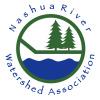|
by Martha Morgan
Water quality in the Nashua River has improved dramatically
over the past three decades. The river once was recognized as one
of the ten most polluted rivers in the U.S., and was infamous for
its daily color changes and odor. Today, many segments of the river
are marvelous for canoeing, and some brave souls even swim occasionally
with no ill effects. However, when the Nashua River Watershed Association
receives calls from parents asking if the river in a particular
segment is safe for swimming (usually after their children have
already taken the plunge), we generally have to caution that we're
not sure on a day-to-day basis if the bacteria levels support swimming,
and we certainly don't recommend swimming after storm events.
Bacteria levels rise in the river following rain events,
partially due to urban runoff, but also due to combined sewer overflows
(CSOs) in the cities where sewer pipes and storm drains share the
same drains. Rainwater from large storm events exceeds the sewers'
capacity for handling the flow, with the result that rainwater and
raw sewage are diverted directly to the river.
The City of Fitchburg has a Consent Order from the
EPA to remedy the combined sewer situation, but is not required
to have the work completed until 2020. The City of Nashua also is
required to separate the storm drains. Indeed the remedies are very
costly and are a huge burden for a city budget.
In 1998, the Massachusetts Department of Environmental
Protection, Division of Watershed Management (DEP-DWM) conducted
extensive sampling in the watershed as part of the Massachusetts
Watershed Initiative's rotating 5-year Basin Cycle. The resulting
report, titled "Nashua River Basin 1998 Water Quality Assessment
Report", can be viewed at: www.magnet.state.ma.us/dep/brp/wm/wmpubs.htm.
The report explains in detail the sections of the river which fall
into the categories of "support", "partially support",
non-support", or "not assessed" for the following
uses: Aquatic Life, Fish Consumption, Primary and Secondary Contact
Recreation, and Aesthetics. This report lists portions of the North
Nashua and mainstem Nashua rivers and nine lakes in the Nashua River
Basin on the 1998 list of impaired waters. Impairments are due to
elevated bacteria levels, nutrient levels, sedimentation and/or
toxicity.
Combined sewer overflows and municipal wastewater
treatment plants are not solely to blame for elevated bacteria levels
in the river. Homes have been densely settled adjacent to the river
and tributaries in areas where today's regulations would have prohibited
development. Wetland soils near rivers are not amenable to septic
systems. Some municipalities are in the process of remedying this.
For instance, Lancaster is placing sewer lines in some of the areas
with homes adjacent to the river, which should help prevent failed
septic systems from contributing to increased bacteria counts along
that section of the river. It should be noted that sewers have adverse
impact on streamflow through reducing infiltration and inflow (I/I)
of adjacent surface and ground water, so where sewers might mitigate
a water quality problem they might exacerbate a water quantity problem
in some situations.
Agricultural activities, despite being diminished
since burgeoning development has replaced fields with housing lots
and asphalt roads, still contribute bacteria and nutrients to the
watershed. Excess nutrients from fertilizers on agricultural fields
and suburban lawns produce excessive amounts of plant growth in
ponds and streams. The decaying of the plants consumes dissolved
oxygen needed by aquatic life, and often results in offending odors.
An overgrowth of noxious plants covers swimming areas in ponds and
contributes to pond eutrophication. Pepperell Pond, a Nashua River
impoundment, is a "sink" in the river for phosphorus,
which results in green algae blooms that cover the pond in summer.
Two rivers in the basin are considered excellent
cold water fisheries: the Squannacook and the Nissitissit Rivers.
All but the lowest reaches of these two rivers support all of the
potential uses listed in the DEP report. A major threat to these
and other tributaries is suburban development, which in turn leads
to increased sedimentation and nutrient runoff. Nutrient loading
to the river from treatment plants may be addressed by updated,
stricter controls in discharge permits. Development pressure along
tributaries must be addressed through local controls, planning for
growth and natural resource protection, and efforts to preserve
open space. Water quality can best be maintained or improved through
these joint efforts.


|



